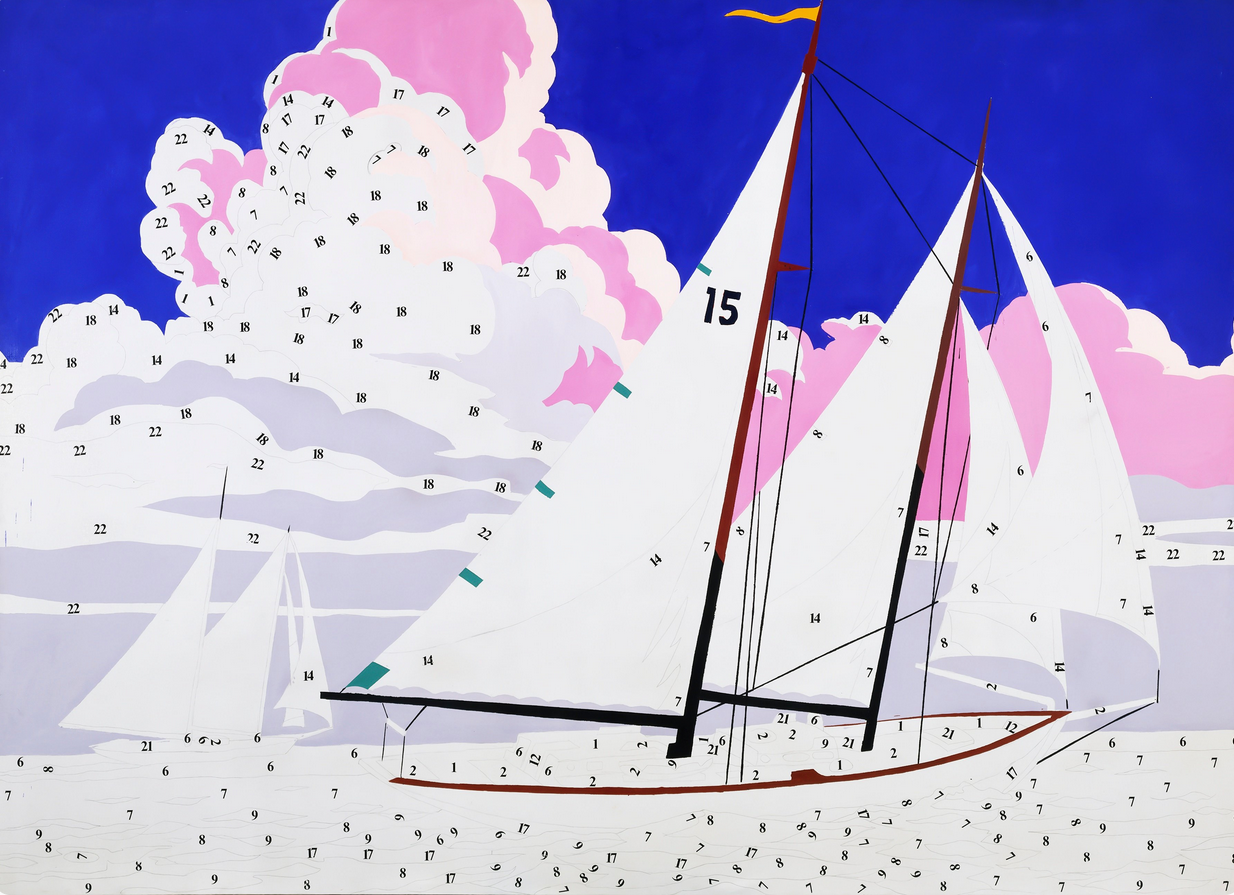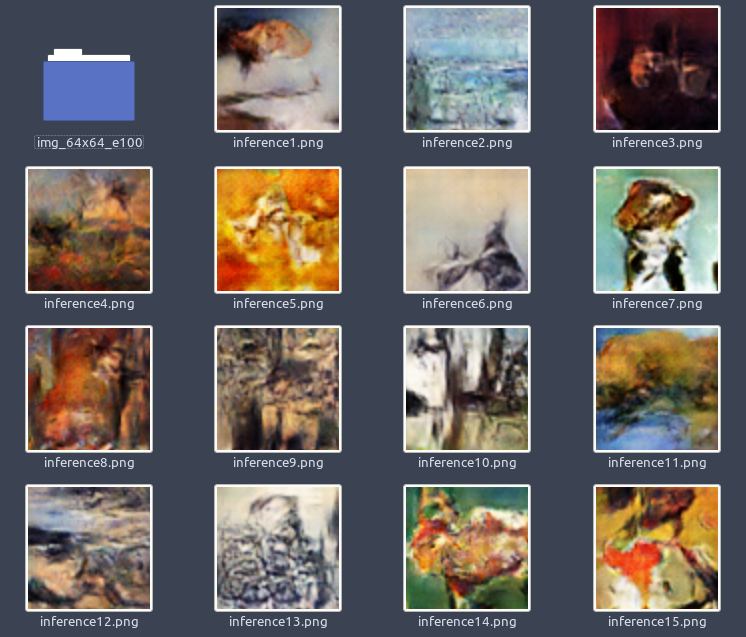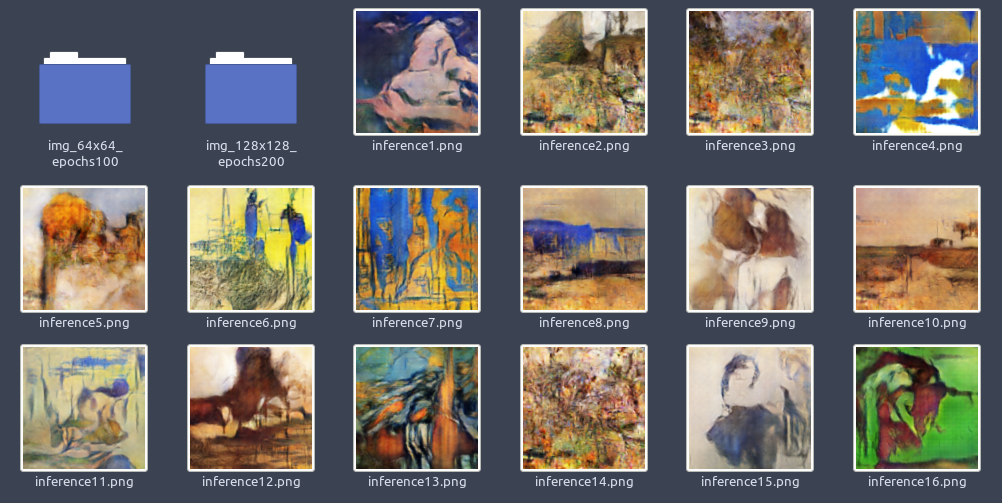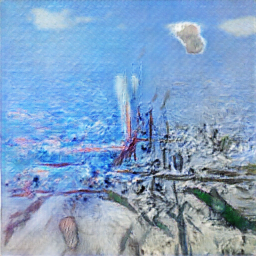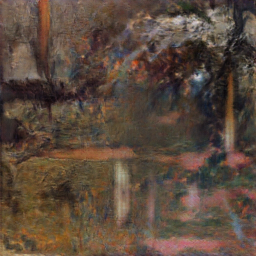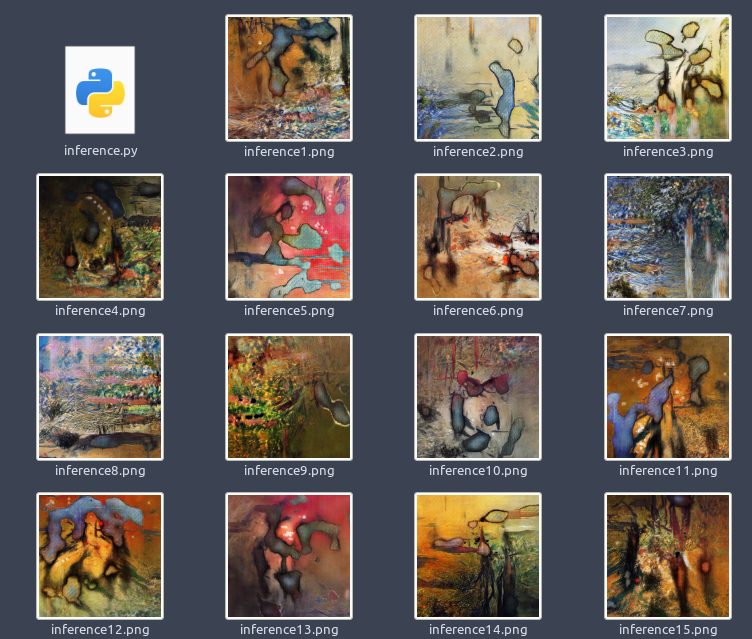Impressionist GAN in PyTorch
Much of Andy Warhol's work had to do with the industrialization and commercialization of art. He was obsessed with the repetition in art, evident in Cambell's Soup Cans and the mechanization of his work via silkscreening. In an interview in 1963, Warhol was asked why he painted the same image over and over, he responsed "The reason I'm painting this way is that I want to be a machine."
Some of my favorite paintings is a lesser-known series by Warhol, titled Do It Yourself. In particular I really enjoy Do It Yourself (Sailboat) (depited above). This series of painting was a critique (or perhaps in reverence of) paint by numbers kits, which were sold so that people could make art at home. While the concept of paint by numbers ties into the commodification of art as a whole, it also brings up questions of orginiality and creativity. What is art if it's as simple as painting by numbers?
Generative Adverserial Networks (GANs) take a vector of random numbers as input, and output whatever they were trained to produce. In this repository, I will be training them to create impressionist paintings - to paint by numbers.
As a first test, I wanted to get something running fairly fast, so I chose small images, a latent vector twice the size of the image (128 random numbers), and just 100 epochs. The results are somewhat okay. Ideally, I want higher resolution, and training to maybe 300 epochs. This was the random vector I was tracking progress on as the network trained to see how a static input evolves over time:
And here is a few more samples:
This model took about 1.5 hours to train on a NVIDIA MX350.
I doubled the width and height of the images and trained for twice the length. I think that the model could go to 250 or 300 epochs ideally. The target resolution is 1024x1024, but to do this, we need to train on a cloud compute platform.
Crucially, I also adjusted the learning rate of the generator to be much faster than the descriminator. This seems to strike a good balance between the two, though I noticed towards the end of the 200 epochs, the generator began to do worse at fooling the discriminator.
Here are some samples from this run. I think they are much better than test 1, but there is still a ways to go.
This model took about 14.7 hours to train on a NVIDIA MX350.
We had to spin up some AWS resources for this one, but there isn't any monumental leaps from the last model. Just increased the size and the training time. Took 14.5 hours on a NVIDIA K80.
These are some of the better photos, but in general you will notice some splotchy photos here. I think this could be due to the network being too small or Adam learning rate decayed too quickly.
